Aloe x ‘Christmas Carol’
I’m both frugal and an admirer of a good work ethic, so I find ‘Christmas Carol’ aloe appealing.
This member of the Asphodelaceae family provides holiday cheer in season, and is also a beautiful house plant all year long.
None of that “bloom once and then wither” aggravation for these appealing star-shaped succulents. Instead, they have red and green coloration within their leaves, and look positively gorgeous from January through December.

We link to vendors to help you find relevant products. If you buy from one of our links, we may earn a commission.
Heck, you can even break off a leaf and rub the gel on your skin to soothe burns. So, they’re practical and beautiful – even if it’s true that I probably wouldn’t waste one of those pretty leaves if another salve was handy.
Planted outdoors in USDA Hardiness Zones 9b-11, they also serve many purposes for a one-time investment.
In addition to being potential ground cover, container plants, and rock garden candidates, ‘Christmas Carol’ draws hummingbirds and pollinators with its dark pink blooms.
And, it’s drought tolerant, evergreen, and even deer resistant when grown in one of those zones, where the temperatures never dip below 25ºF.
Want to grow your own ‘Christmas Carol’? The toughest part may be finding a division or seedling to purchase. These aloes are relatively rare, though simple to propagate once you’ve obtained a mature plant.
Once you’ve got one, they’re pretty easy to keep alive and looking good, especially if you follow the tips and techniques I’m about to share.
Here’s what I’ll cover:
What You’ll Learn
What Is Christmas Carol Aloe?
One of the many available cultivars of aloe, ‘Christmas Carol’ is a compact succulent, reaching eight to 12 inches tall and spreading the same distance.
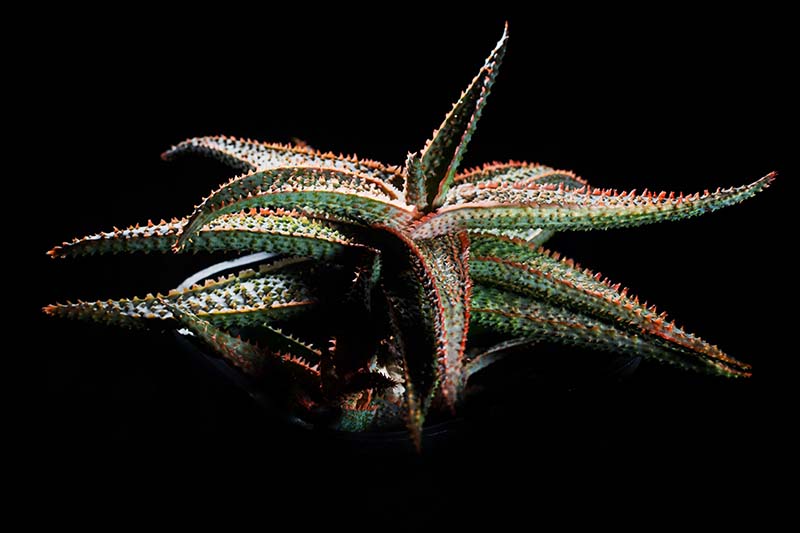
It is kin to the medicinal Aloe vera, and its leaves also produce a soothing gel, but it grows much more slowly than the more common aloe plants do.
This succulent grows outdoors as a perennial only in Zones 9b-11. Everywhere else, it may be grown either as a container plant that comes in for the winter, or as a full-time houseplant.
Unlike Christmas cactus, this succulent doesn’t get its name because it blooms in time for use as an addition to winter holiday decor.
Instead, it earned the festive name ‘Christmas Carol’ because it has leaves in the holiday’s traditional colors, and a star shape when viewed from above.
It develops red or dark orange highlights on green, spiky rosettes. Some edge the leaves in a sawtooth pattern, while others appear as raised red spots on the leaves’ top surfaces.
Ironically, the plants turn the reddest in the summer (in the Northern Hemisphere, at least), since prolonged exposure to the sun brings out the color.
In the short days of winter, not only do the leaves fail to become tinged with red, outdoor ‘Christmas Carol’ plants go dormant.
Cultivation and History
Aloe in general is indigenous to eastern and southern Africa, and this particular type is one of the many developed by modern-day California-based hybridizer Kelly Griffin.
Griffin is known to indoor gardeners as the “succulent plant evangelist” and has introduced more than 100 new varieties.
One of this cultivar’s parent plants is ‘Doran Black,’ a silvery aloe with smoother leaves that also grow in spiky rosettes.
Growing Outdoors
Grown outdoors, ‘Christmas Carol’ doesn’t need much to thrive and will produce foot-long stalks of dark pink flowers each fall before its winter dormancy.
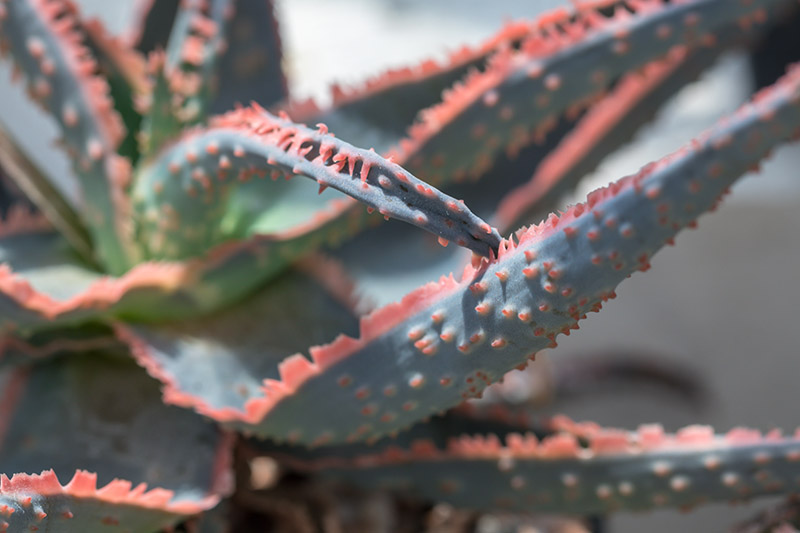
Before you rush off to plant your own, it’s critical to make sure your area is warm enough to host this succulent in the outdoors. I cannot emphasize this enough. It’s hardy only in regions that don’t typically go below a range of 25 to 30ºF.
These festive succulents might survive the occasional light freeze, but it’s not a safe bet, so why risk it?
They also need well-draining soil. It can be poor soil, but if it retains water, that can kill ‘Christmas Carol’ in short order.
Outdoor plantings can also put up with only partial sun, but they’ll absolutely thrive in a location that receives full sun for at least six hours per day.
They’re drought tolerant, but you should still give them an inch of water once a week in hot weather, assuming it hasn’t rained that week and their soil is dry to the touch.
There are a few insects that may plague aloe, like soft scale and aphids.
But don’t worry too much. These plants in general are easy to care for, as long as you help to keep them from developing wet feet, aka standing in water.
According to experts at the Arizona Cooperative Extension, most of the potential insect pests “do not require chemical treatment for adequate control” and “A healthy, non-stressed plant will withstand the occasional insect pest better than a plant stressed by planting in poorly-drained soil, improper planting location, and general neglect.”
If your winters involve hard freezes, you can still grow this succulent outdoors in containers.
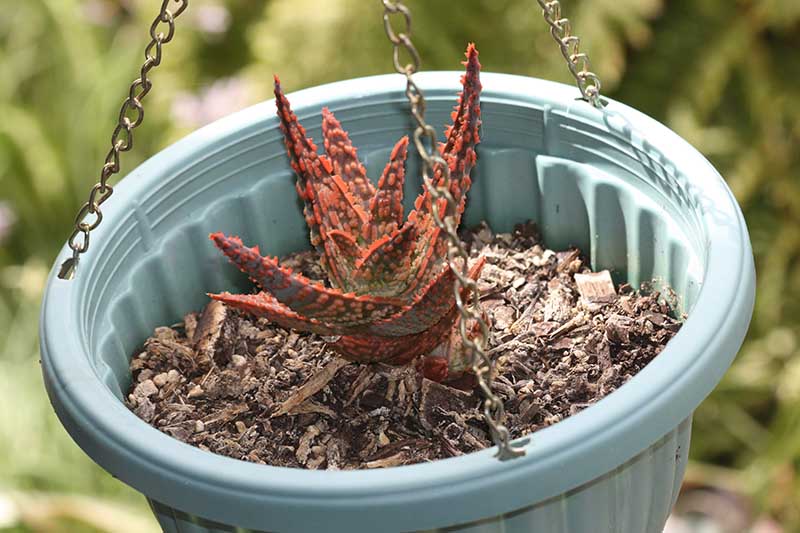
But I give you this advice with a strong warning: If you plan to grow it outdoors and then bring it in when the temperatures get too cold outside, have a plan in place for providing it with ample indoor light.
You can overwinter them inside on a windowsill that’s bright for at least a few hours a day, or anywhere in the house if you can let them bask under a grow light with adequate wattage for a couple hours per day.
Without strong light, they may not survive the winter months, and they’ll fail to thrive until you can place them outdoors again.
Many of these same tips apply to growing ‘Christmas Carol’ aloe as a full-time houseplant. Read on for other steps you’ll need to take to keep them thriving inside your home.
Growing Indoors
These festive succulents are a great pick if you’re looking for a casual houseplant for more hands- off (okay, forgetful) gardeners.
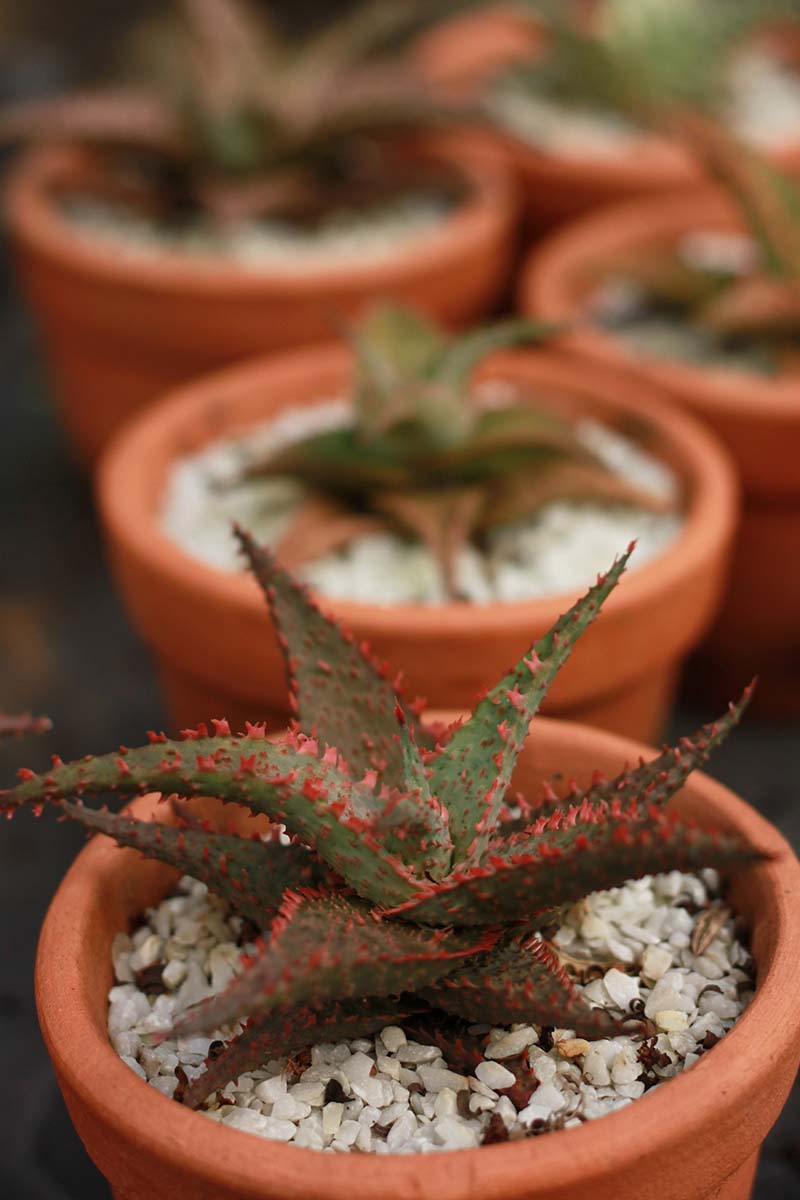
They only need occasional water, and they’re cool with being “under potted” – that is, growing in a pot that you may be inclined to believe looks like it’s a size too small for them.
In other words, they like being a little bit potbound.
And these aloe fit right into holiday centerpieces, succulent gardens, and even terrariums.
Just keep in mind that they don’t tend to get as many red accents when grown indoors, since the light isn’t as strong, nor are they likely to bloom.
The two top considerations here are pretty similar to what you’d need to keep in mind for the same variety when grown in a rock garden or outdoor container:
They need lots of light, and they can’t tolerate standing water.
Always make sure to plant this succulent in a pot with adequate drainage holes, and place a tray or plate beneath it to catch any extra water.
Use a cactus or succulent potting mix that’s at least 50 percent sand or perlite. Their shallow roots need only three or four inches of this potting material and they’re set.
When you water, make sure the soil drains well, and discard any extra that runs into the drainage tray beneath the container.
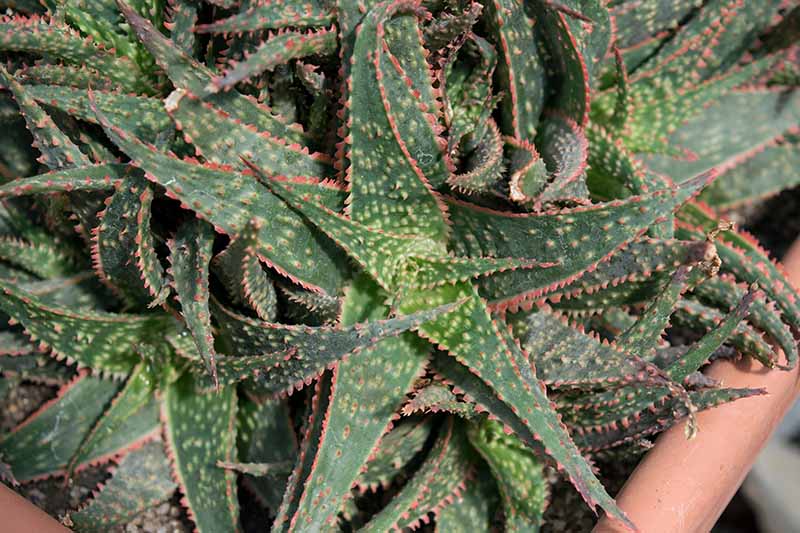
The ideal temperature for these plants is 70ºF, but they’ll make do with temps as low as 40ºF, and maybe even a few degrees lower if you want to turn off the heat and go on vacation for a week.
They’re easy to care for, really they are. In fact, you should avoid the mistake of giving them too much versus too little. They don’t want too much water, and they don’t require too much room to grow.
They might become more seriously rootbound eventually and need repotting, but you can expect this to happen only once every two or three years.
You’ll be able to tell they’ve reached that point when the rosettes completely hide the soil surface and the leaves are cascading over the edges of the pot.
When you notice those signs, move your mature aloe into a new pot that’s just a size bigger – maybe two inches wider in diameter – and it will be good to go for a couple more years.
Growing Tips Recap
- Water only when the soil is dry to the touch at least two inches down. And then make sure any excess drains and is discarded to prevent wet feet.
- ‘Christmas Carol’ will tolerate relatively chilly temperatures indoors, as cold as 45ºF, but a consistent source of bright light is required, at least 4-5 hours daily from a window or grow light.
- This aloe prefers to be a bit pot bound. When it outgrows its container, make sure to transfer it to a pot that’s just one size larger, or a couple of inches wider in diameter.
Where to Find Plants and Seeds
If you have a buddy with this variety of aloe, you are in luck! The simplest way to acquire your own red and green succulent is to propagate one of the small offsets the mature plants produce.
These offsets, or “pups,” sprout in the soil near the base of the plant. Just tug one gently out of the dirt, roots and all, let it dry for a day or two, then plant in a two-inch container full of pre-moistened cactus or succulent mix.
See more directions for propagating ‘Christmas Carol’ and other aloe varieties in our propagation guide.
You can also buy seedlings, though they’re not as widely available as many other varieties of succulents.

These seedlings in four-inch pots are available via Amazon.
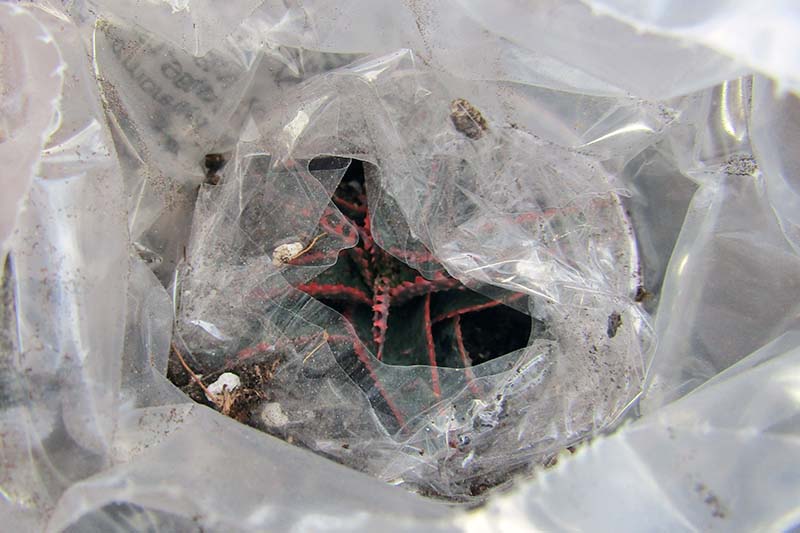
In my experience, the Hirt’s seedlings arrive in great shape, surviving the shipping quite well, carefully wrapped in bubble wrap.
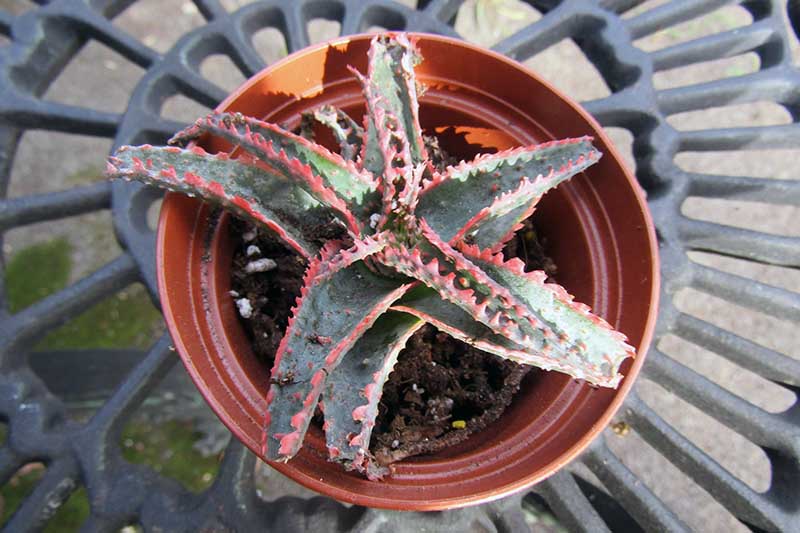
It’s also possible to start this unusual succulent from seed, and you can find packets of 50 seeds from Exotic Cactus via Amazon.
Remember, though: ‘Christmas Carol’ is a hybrid, so there’s a good chance seeds won’t grow true to the variety you’re expecting.
If you still want to give it a go, increase the odds of germination by creating a shallow container of cactus or succulent potting mix that’s at least half sand or perlite and that has been moistened.
A container that can later rest on a sunny windowsill is the best option.
Plant the seeds about an inch apart and top them with a thin layer of the light soil, about an eighth of an inch thick.
Place the container where it won’t be disturbed in an area that maintains a consistent temperature of 70°F or a few degrees warmer.
Bottom heat and a plastic wrap cover on top of the container will hasten germination, which can take anywhere from two to four weeks.
Make sure to keep the soil damp while the seeds germinate – this is crucial. A spray bottle of plain water or a plant mister will work best. Replace the plastic top after spritzing each time.
Once the seeds sprout, remove the plastic and make sure they get a couple of hours of indirect sunlight per day.
Then increase the amount of light exposure as they grow, settling on six hours per day starting when they’re six months old and thereafter.
When they’re a few months old and an inch or two tall, they’re ready for transplant into their own two-inch pots.
Water them often for the first couple of months, making sure you allow them to drain, too. Even very young seedlings can’t tolerate standing water.
When they’re six months old, the seedlings can move to the same schedule as the older plants, where you water deeply, make sure the moisture drains completely, and let the soil dry to two inches deep between waterings.
Quick Reference Growing Guide
| Plant Type: | Evergreen succulent | Foliage Color: | Bright pink to red-orange / reddish-green |
| Native to: | Cultivated hybrid | Tolerance: | Drought, heat, poor soil |
| Hardiness (USDA Zone): | 9b-11 | Soil Type: | Loose, sandy |
| Exposure: | Full sun (outdoors), bright indirect light (indoors) | Soil pH: | 6.0-8.5 |
| Planting Depth: | Same as root ball | Soil Drainage: | Well-draining |
| Time to Maturity: | 3-5 years | Companion Planting: | Cacti and other succulents |
| Height: | 8-12 inches | Uses: | Ornamental houseplant, xeriscaping in Zones 9-11 |
| Spread: | 8-12 inches | Family: | Asphodelaceae |
| Water Needs: | Low | Genus: | Aloe |
| Maintenance: | Low | Cultivar: | x 'Christmas Carol' |
| Common Pests: | Aphids, gall mites, snout weevils, soft scale | Common Diseases: | Aloe rust, bacterial soft rot, basal stem rot. |
Grow Yourself a Merry Little Aloe
Growing ‘Christmas Carol’ made me aware of just how fun and colorful members of the succulent family can be.

If you’ve also given this aloe variety a go, or have any questions, please share your thoughts in the comments section below. (Singing a favorite carol while you do, or mentioning it, is entirely optional, but fun!)
To learn more about caring for aloe plants in your home, check out these guides next:
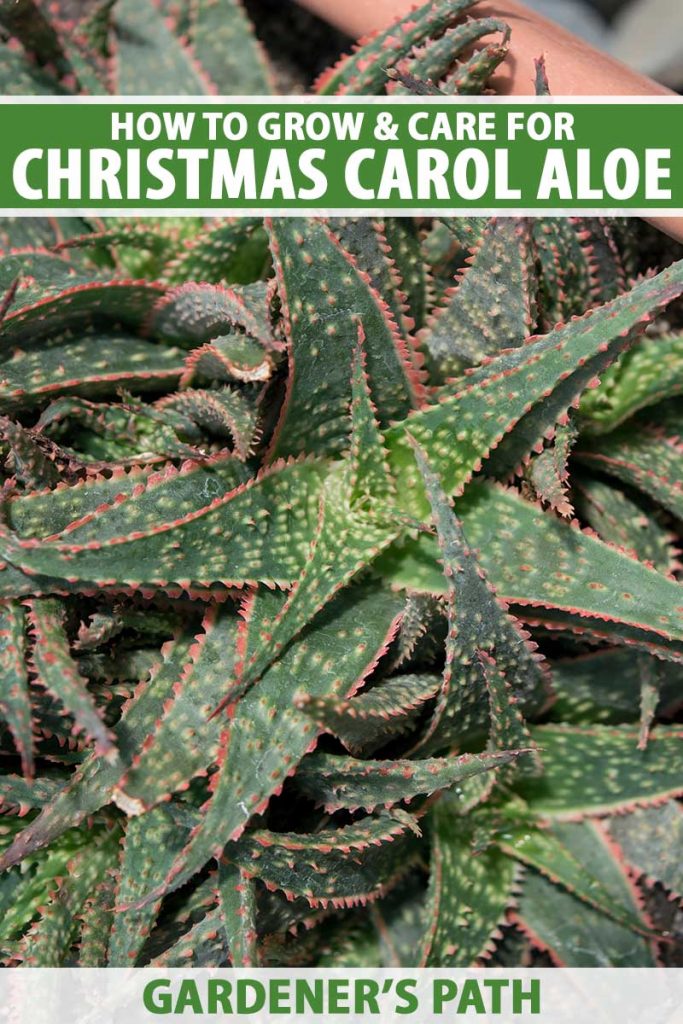


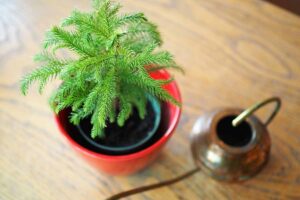
Half of the photos show hybrids other than ‘Christmas Carol’..the very textured ones are ‘DZ’.
Hello J m, thanks for checking in on this! I am confident that most all of these are ‘Christmas Carol,’ though you are probably correct that the one pictured twice in a white pot is probably the closely related ‘DZ.’ We’ll check out changing those images. Any others that you particularly think are something else?
Can you tell me if rabbits eat these Christmas aloes? I live in Arizona and have a lot of rabbits. Thank you.
Hello Mary Ann Wolfenson.
According to Danny Schnell, a master gardener with the Maricopa County extension service in Phoenix, rabbits usually won’t eat aloe vera. Might be a good one to try!
If anyone is reading and they have a pet rabbit, please note that ingesting aloe vera can give them indigestion and even cause fatal reactions.
Are they poison to humans?
Hello Jean Johnson I appreciate you bringing up an important question. The short answer is, “be careful.” While the clear aloe gel and the skin of the leaves are not toxic to humans from all accounts, the latex produced by the plant can have some undesirable effects when ingested, according to the Mayo Clinic. So I would strongly discourage purposefully eating any aloe leaves, or any products made with aloe gel and other ingredients. If a kid or infant somehow ingests part of an aloe plant, consult your family doctor right away for next steps. And we’re gardening experts here… Read more »
Do they need any fertilizer? What kind and how often? Thank you I just got one today it’s beautiful.